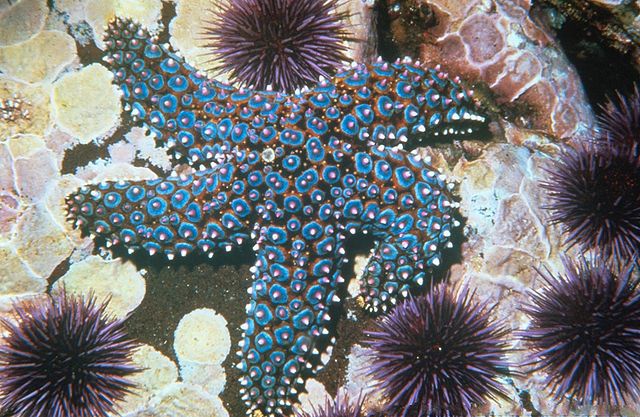 |
This is a file from the Wikimedia Commons. Information from its description page there is shown below.
Commons is a freely licensed media file repository. You can help.
|
Pisaster giganteus
| Public domainPublic domainfalsefalse |
 |
This image is in the public domain because it contains materials that originally came from the U.S. National Oceanic and Atmospheric Administration, taken or made as part of an employee's official duties.
|
|
- Photo: Channel Islands NMS.
- Printing resolution: 300 DPI.
- Downloaded from http://www.sanctuaries.noaa.gov/pgallery/pgchannel/living/living_29.html
- Leyend: Sand Star - Sand stars ( Astropecten foliota) can be recognized by the rows of spines along the margins of their arms and can attain a diameter of up to 10 inches. They range from the Channel Islands to Ecuador and eat a variety of foods including snails, dead fish, sand dollars, clams, other sea stars, and sea urchins.
Question: is it a Pisaster giganteus or a Astropecten foliota? Both are Asteroidea
 |
Attribution information, such as the author's name, e-mail, website, or signature, that was once visible in the image itself has been moved into the image metadata and/or image description page. This makes the image easier to reuse and more language-neutral, and makes the text easier to process and search for. Commons discourages placing visible author information in images.
|
Removed text read "Channel Islands National Marine Sanctuary"
File usage
The following pages on Schools Wikipedia link to this image (list may be incomplete):
Through Schools Wikipedia, SOS Children's Villages has brought learning to children around the world. Our 500 Children's Villages provide a home for thousands of vulnerable children. Beyond our Villages, we support communities, helping local people establish better schools and delivering effective medical care to vulnerable children. Help another child by taking out a sponsorship.





